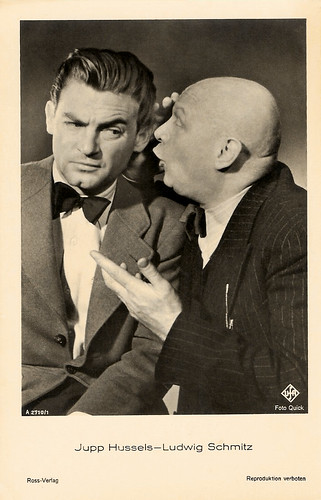
German postcard by Ross Verlag, no A 2710/1, 1939-1940. Photo: Quick / Ufa.
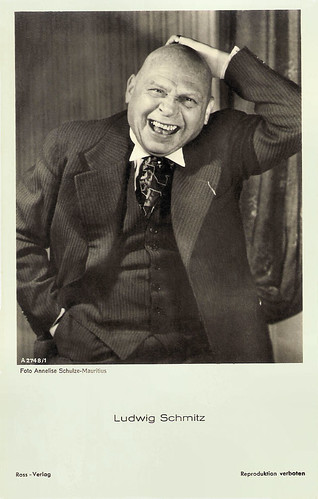
German postcard by Ross Verlag, no. A 2748/1, 1939-1940. Photo: Annelise Schulze-Mauritius.
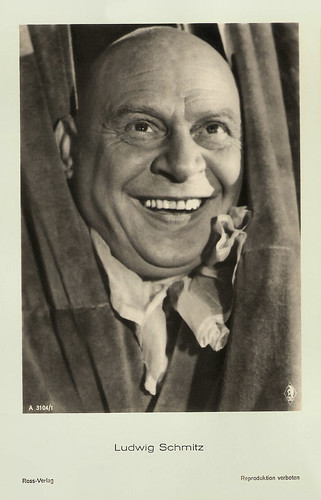
German postcard by Ross Verlag, no. A 3104/1, 1941-1944. Photo: Bavaria-Filmkunst. Ludwig Schmitz in Komödianten/The Comedians (G.W. Pabst, 1941).
A contribution to the Wochenschau
Ludwig Joseph Schmitz was born in 1884 in Cologne, North Rhine-Westphalia, Germany. He was the son of the master cap maker Joseph Schmitz and his wife Louise née Klubschewsky.
Ludwig worked in his father's business and took acting lessons on the side. He started his stage career as a teenager. Around 1900, he got his first engagement at the Stadttheater Nordhausen. Later followed engagements in Mannheim, Düsseldorf, Münster and Munich, where he normally played funny roles.
He was also used as comic support in German films of the 1930s. He made his film debut with the Nazi Propaganda film Um das Menschenrecht/For the Rights of Man (Hans Zöberlein, Ludwig Schmid-Wildy, 1934).
In the following years, he played supporting parts in such entertainment films as Der ahnungslose Engel/The unsuspecting angel (Franz Seitz, 1935) starring Joe Stöckel and Lucie English and Urlaub auf Ehrenwort/Furlough on Parole (Karl Ritter, 1937). He was regarded as a typical representative of Cologne humour.
At the same time, he continued his theatre career and got involved in the Wehrmacht request program. From 1937 Schmitz worked mainly at Berlin theatres. In the years 1939 and 1940, he and Jupp Hussels played the pair "Tran und Helle" in countless short films which were shown as a contribution to the Wochenschau.
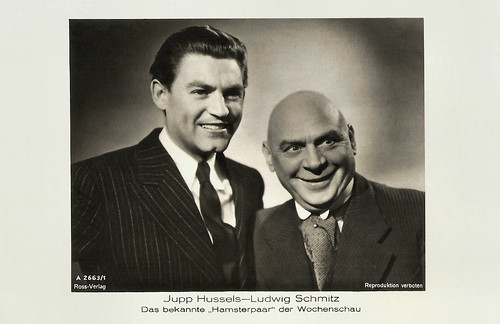
German postcard by Ross Verlag, no. A 2663/1, 1939-1940. Caption: The well-known "hamster couple" from the newsreel.
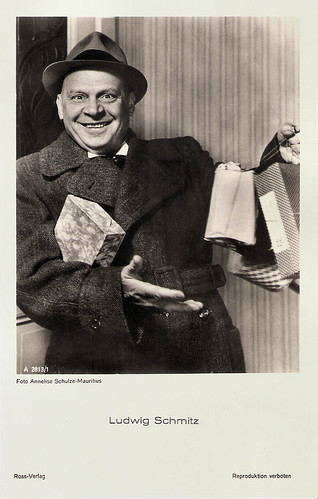
German postcard by Ross Verlag, no. A 2813/1, 1939-1940. Photo: Annelise Schulze-Mauritius.
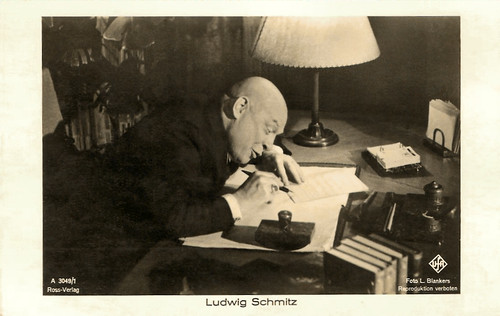
German postcard by Ross Verlag, no. A 3049/1, 1941-1944. Photo: L. Blankers / Ufa.

German postcard by Ross Verlag, no. A 3260/1, 1941-1944. Photo: Baumann / Terra.

German postcard by Film-Foto-Verlag, no. A 3488/1, 1941-1944. Photo: Baumann / Terra.
Typical sense of humour
Despite having joined both the SS in 1934 and the NSDAP in 1937, Ludwig Schmitz was imposed with a working prohibition in 1941 because of "unworthy behaviour".
The only exception was his support role as Büttenredner in Veit Harlan's melodrama Opfergang/The Great Sacrifice (Veit Harlan, 1944) starring Carl Raddatz and Kristina Söderbaum.
After the war, Ludwig Schmitz could not make a comeback until 1950. Then he went on from his earlier successes and entertained the public with his typical sense of humour.
A big box office hit was the Heimatfilm Grün ist die Heide/The Heath Is Green (Hans Deppe, 1951) starring Sonja Ziemann and Rudolf Prack. From then on, he often appeared in films, including Am Brunnen vor dem Tore/At the Well in front of the Gate (Hans Wolff, 1952) starring Sonja Ziemann, and Der keusche Josef/The Chaste Joseph (Carl Boese, 1953) with Waltraut Haas.
In 1954, Ludwig Schmitz died of a heart attack in Münster, North Rhine-Westphalia, Germany. He was 70. Schmitz was buried in the Lauheide forest cemetery near Telgte.
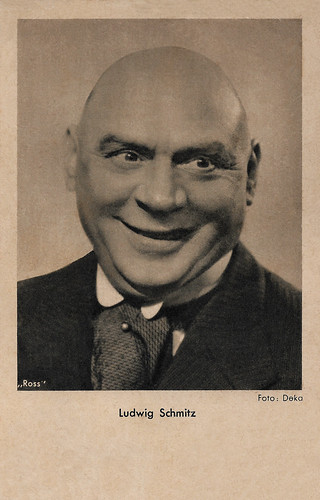
German postcard by Ross. Photo: Deka.

West German postcard by Kunst und Bild, Berlin, no. A 67. Photo: Wesel / Berolina Film / Herzog Film. Ludwig Schmitz in Am Brunnen vor dem Tore/At the Well in front of the Gate (Hans Wolff, 1952).
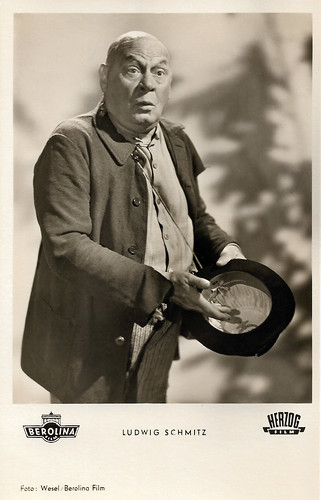
West-German postcard by Kunst und Bild, Berlin, no. A 678. Photo: Wesel / Berolina / Herzog Film. Ludwig Schmitz in Am Brunnen vor dem Tore/At the Well in front of the Gate (Hans Wolff, 1952).
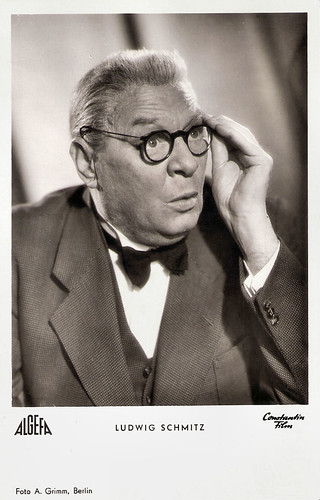
West German postcard by Kunst und Bild, Berlin, no. A 810. Photo: Arthur Grimm, Berlin / Algefa / Constantin Film. Ludwig Schmitz in Der keusche Josef/The chaste Joseph (Carl Boese, 1953).
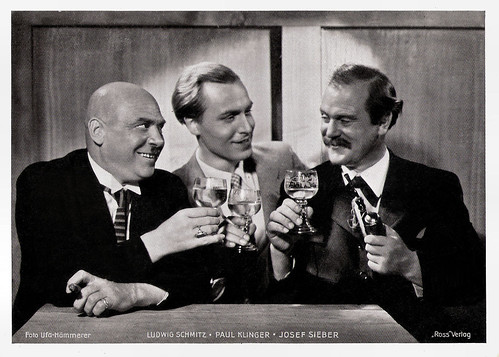
German card by Ross Verlag. Photo: Ufa / Hämmerer. Ludwig Schmitz, Paul Klinger and Josef Sieber in Das Verlegenheitskind/The embarrassment child (Peter Paul Brauer, 1938).
Sources: Wikipedia (German and English) and IMDb.
No comments:
Post a Comment